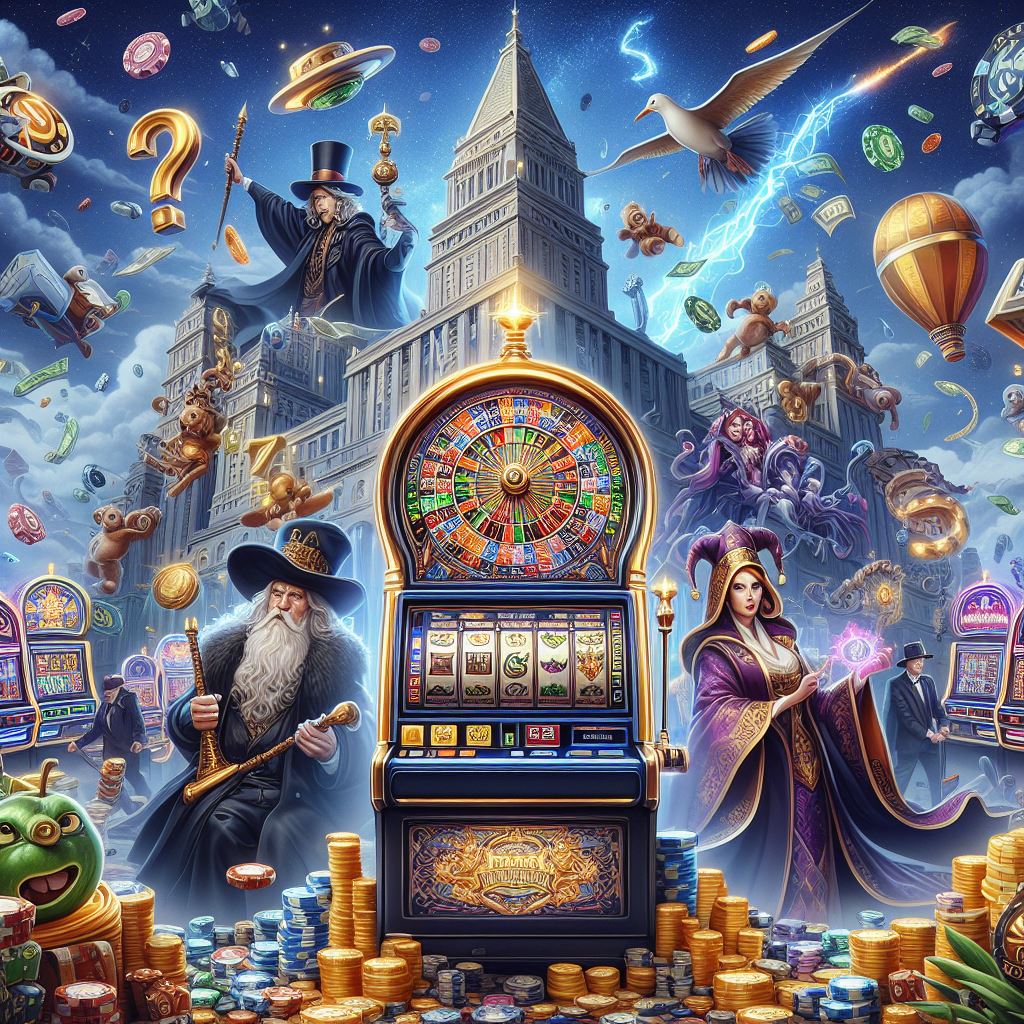Pengantar Menjelajahi Kedalaman Misterius judul pada artikel kami hari ini, kami ucapkan selamat datang di steveheimoff.com. Revealing the World of Gambling Through Words, Strategies, and Real Stories Slot Ocean Lord, yang tersedia di IDNSLOT, menawarkan petualangan bawah laut yang mendebarkan di mana pemain dapat menjelajahi misteri-misteri laut sambil mencari harta karun tersembunyi. Game ini menggabungkan …
Continue reading Menjelajahi Kedalaman Misterius dengan Slot Ocean Lord
Menaklukkan Mesin Slot Online: Panduan Praktis untuk Pemula
Menaklukkan Mesin Slot Online merupakan judul pada artikel kami hari ini. kami ucapkan selamat datang di steveheimoff.com Revealing the World of Gambling Through Words, Strategies, and Real Stories Bermain mesin slot online bisa menjadi pengalaman yang menyenangkan dan mengasyikkan, tetapi bagi pemula, bisa terasa menakutkan. Dengan begitu banyak variasi game dan strategi yang berbeda, bisa …
Continue reading Menaklukkan Mesin Slot Online: Panduan Praktis untuk Pemula
Tren Slot Online: Dapat Kita Harapkan
Tren Slot Online merupakan judul artikel kami hari ini. kami ucapkan selamat datang di steveheimoff.com. Revealing the World of Gambling Through Words, Strategies, and Real Stories pembahasn menarik tentang perkembangan teknologi yang terus menerus, industri slot online telah melihat banyak inovasi dan perubahan yang signifikan. Tren terkini dalam slot online tidak hanya meningkatkan cara permainan …
Continue reading Tren Slot Online: Dapat Kita Harapkan
Perkembangan Terbaru Slot Online: dalam Fitur Bonus
Perkembangan Terbaru Slot Online merupakan judul pada artikel kami hari ini. kami ucapkan selamat datang di steveheimoff.com Revealing the World of Gambling Through Words, Strategies, and Real Stories pembahasan menarik tentang Slot online telah berkembang jauh melebihi versi awal mereka. Kini, dengan kemajuan teknologi dan keinginan pengembang untuk memikat pemain dengan pengalaman yang semakin interaktif …
Continue reading Perkembangan Terbaru Slot Online: dalam Fitur Bonus
Perkembangan Teknologi Casino Online: Dari Live Dealer
Perkembangan Teknologi Casino Online merupakan judul pada artikel kami hari ini. kami ucapkan selamat datang di steveheimoff.com. Revealing the World of Gambling Through Words, Strategies, and Real Stories. Pembahasn menarik tentang Perkembangan teknologi telah merevolusi industri casino online. Memperkenalkan fitur-fitur baru yang menarik dan meningkatkan pengalaman berjudi dari waktu ke waktu. Dari pengenalan live dealer …
Continue reading Perkembangan Teknologi Casino Online: Dari Live Dealer
Keajaiban Teknologi Slot Terbaik: Evolusi Grafis dalam Slot Online
Keajaiban Teknologi Slot Terbaik merupakan judul pada artikel kami hari ini. Kami ucapkan Slamat datang di steveheimoff.com Revealing the World of Gambling Through Words, Strategies, and Real Stories pembahasan menarik tentang Dalam beberapa tahun terakhir. Industri perjudian online telah menyaksikan perkembangan teknologi yang luar biasa. khususnya dalam hal grafis dan animasi dalam slot online. Mesin …
Continue reading Keajaiban Teknologi Slot Terbaik: Evolusi Grafis dalam Slot Online
Mengenal Berbagai Casino Online: Jenis Permainan dan Trik
Mengenal Berbagai Casino Online merupakan judul pada artikel kami hari ini. kami ucapkan selamat datang di steveheimoff.com. Revealing the World of Gambling Through Words, Strategies, and Real Stories pembahasan terbaik tentang Casino online telah merevolusi industri perjudian, memberikan akses yang mudah dan nyaman ke berbagai jenis permainan judi dari seluruh dunia. Dengan hanya beberapa klik, …
Continue reading Mengenal Berbagai Casino Online: Jenis Permainan dan Trik
Strategi Menang Casino Online: Rahasia Para Ahli
Strategi Menang Casino Online merupakan judul pada artikel kami hari ini kami ucapkan selamat datang di steveheimoff.com. Revealing the World of Gambling Through Words, Strategies, and Real Stories pembahas menarik tentang Dengan popularitas yang semakin meningkat dari casino online, banyak pemain yang mencari cara untuk meningkatkan peluang mereka dalam memenangkan permainan. Meskipun keberuntungan memainkan peran …
Continue reading Strategi Menang Casino Online: Rahasia Para Ahli
Eksplorasi Menuju Kemenangan Slot: Fakta dan Strategi Terbaik
Eksplorasi Menuju Kemenangan Slot merupakan judul pada artikel kami hari ini. kami ucapkan selamat datang di steveheimoff.com Revealing the World of Gambling Through Words, Strategies, and Real Stories pembahasan menarik tentang Permainan slot telah menjadi salah satu permainan kasino paling populer di seluruh dunia, baik di kasino darat maupun dalam bentuk slot online. Tetapi, di …
Continue reading Eksplorasi Menuju Kemenangan Slot: Fakta dan Strategi Terbaik
Tren Terbaik Slot Online: Desain dan Tema Slot Online
Tren Terbaik Slot Online merupakan judul pada artikel kami pada hari ini. kami ucapkan selamat datang di steveheimoff.com Revealing the World of Gambling Through Words, Strategies, and Real Stories pembahasan menarik Slot online telah menjadi salah satu bentuk hiburan paling populer di dunia perjudian digital, menawarkan pengalaman yang kaya akan grafik dan penuh dengan inovasi. …
Continue reading Tren Terbaik Slot Online: Desain dan Tema Slot Online








